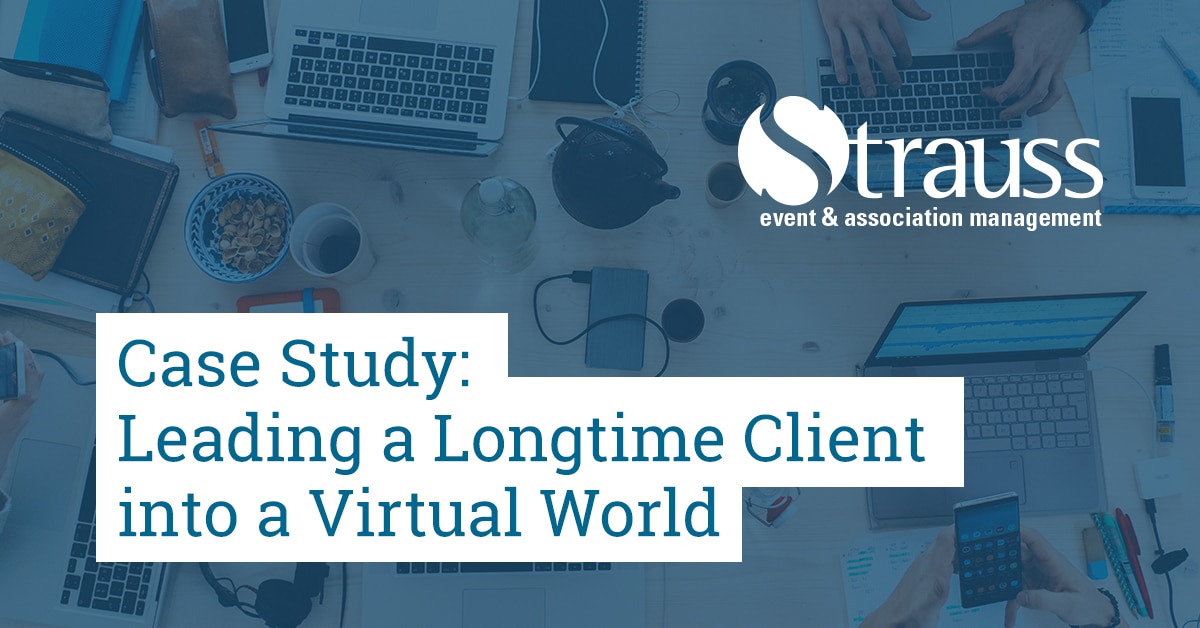A long-time client who holds an annual educational conference for its professional members did not want to lose a year of presenting new procedures and treatments to their members due to the COVID-19 pandemic. They knew they could not hold a three day in-person conference with live presentations and exhibitions in 2020, but they still needed to connect and educate their constituents. After making the difficult decision to cancel the annual conference, we started working together on finding a replacement.
Planning
First, we determined the client’s educational objectives and the best form to present these objectives to their members. We went through many scenarios. These were some of our options:
- A live-streamed conference
- Each speaker to come to a designated studio at appointed times and give their presentations. Speakers would take part in a live Q+A. This option was rejected, due to it being impossible to control the presenter’s schedules and the possibility of last minute cancellations due to their healthcare profession’s nature.
- We then considered a fully recorded conference, allowing the presenters to record their presentations in advance. This was a good start, but we quickly realized the presentations needed a uniform look. We would need the presenters to come into a studio to record their presentations and have them edited.
 Even within a pre-recorded conference, we knew we would need some live elements.
Even within a pre-recorded conference, we knew we would need some live elements.
- To earn educational credits, the attendees needed to be able to ask questions of the presenters in a live situation.
- We considered a live AGM/Town Hall session. This AGM would take place during the last hour of the conference. The AGM would be a mixture of live and pre-recorded sessions.
We finally settled on a hybrid conference with a mix of pre-recorded presentations with live Q+A’s and a semi-live AGM with two prerecorded sessions. We sent out RFP’s to three AV companies and settled on one who was brave enough to take us on! Following the advice of the AV company, we determined that we would use Zoom as a streaming platform.
Recording
We offered each presenter a date for recording their sessions in the studio. After each session was recorded, they were edited to show the presenter’s power point presentation on-screen beside the presenter, recreating the in-person experience for attendees. The presenters were then asked to be available for the live Q+A session after their recorded session streamed.
Sponsors
We had to seek out sponsorships for the conference. We offered high-level sponsors a chance to promote their company through a self-produced video. Due to government regulations, attendees would only view these if they chose to watch them. We decided to house the videos on the association’s website and promote the link to the sponsor videos during the conference.
The Conference
Just before the day of the conference, COVID-19 related regulations changed in our province, limiting in person events to 10 people indoors. We carefully scheduled our in-person numbers on the day of the conference as we had three AV staff and rotated seven other people working on the project.
On the day of the conference, attendees signed into Zoom with their own personalized links. The live moderator welcomed them and introduced recorded sessions and moderated the live Q+A sessions.

The conference schedule included nine plenary sessions plus three breakout sessions that would run concurrently; we achieved this using Zoom rooms. The attendees chose their desired breakout sessions during the registration process which made it simple to send attendees into their chosen session. In the future, we will assign moderators to each breakout session as it was difficult for the individual presenters to monitor the Q+A.
Once the conference portion ended, we had 10 minutes to change over the set from a plenary room to an AGM with three cameras and two live hosts. The hosts were seated at tables that had been distanced according to government guidelines.
The AGM session was open to the public. It included prerecorded and live sessions including a live Q+A session.
Lessons Learned
The conference was very successful. There were over 250 attendees and member engagement was high. In the future, we will consider a multi-day conference with each day would being no more than four hours long. We would also consider other streaming options. While Zoom was the most cost efficient, it can be difficult to fit a conference format. We are looking forward to creating more signature events like this one.

